Last updated on March 22, 2024
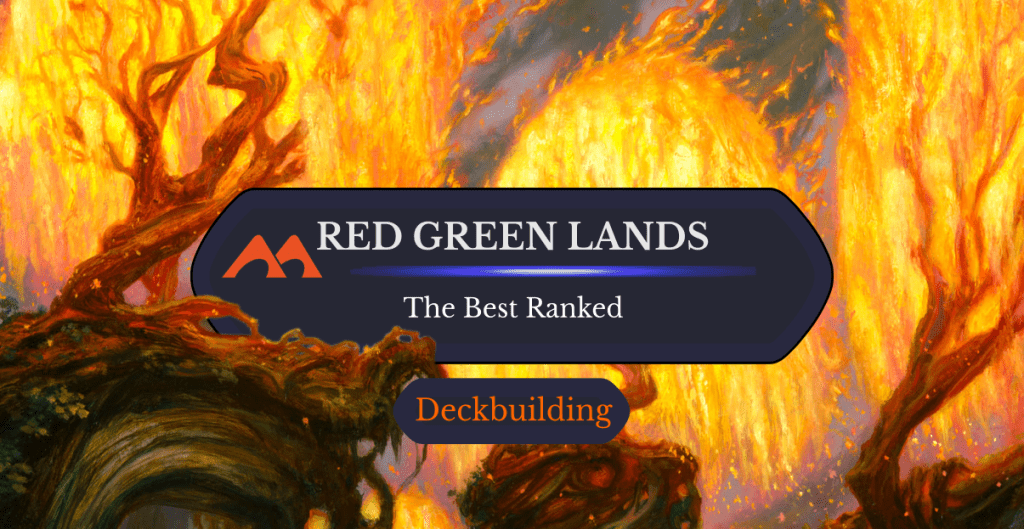
Grove of the Burnwillows | Illustration by Donato Giancola
Picking the right land base can be one of the trickiest and most expensive parts of building a Magic deck. You’re going to be presented with a huge pool of cards to choose from, especially if you’re newer to the game.
Today I’m going to walk you through some of the better land options for your Gruul () decks.
Here’s what I considered when ranking these lands:
- Speed: How quickly the land can start producing mana.
- Mana Production: How many colors the land can produce, and how much of each.
- Searchability: How easily the land can be searched for with other cards.
- Utility: What the land can do other than tapping for mana.
- Versatility: How many different circumstances the land is useful in.
Keeping all of that in mind, let’s move onto the list itself!
Honorable Mentions: Mogg Hollows + Pinecrest Ridge

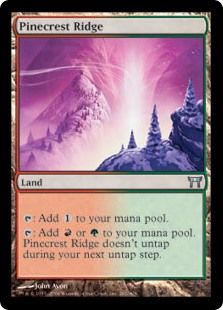
Mogg Hollows and Pinecrest Ridge are known as “nap” lands, because they need a 1-turn break before being able to untap after tapping for a colored mana.
The reason these lands don’t make the list proper is that they aren’t consistent enough to be worth it. Most of the time you’ll be stuck with a land that either taps for colorless, or only once every other turn, and there are a lot more consistent lands to include.
#29. Timber Gorge + Shivan Oasis


Timber Gorge and Shivan Oasis are the slowest of the Gruul lands at your disposal, but they aren’t a bad option to include. Especially in slower formats. They’re also very budget-friendly, making them a great option for casual players, or for trying out a new color combination without breaking the bank.
#28. Highland Weald
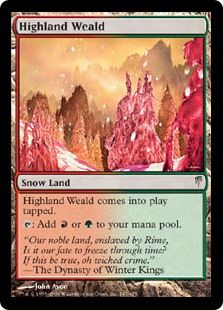
My thoughts on Highland Weald are very much the same as my thoughts on the previous two cards. The main difference here is that this is a snow land, meaning it can tap for snow mana on top of green or red.
Some cards have extra abilities when paid for with snow mana or gain benefits based on the number of snow permanents you control. This card is also searchable with cards that search for snow cards, like Into the North.
#27. Gruul Guildgate

What separates Gruul Guildgate from other tapped lands is that it has a land type: gate, so it synergizes with the likes of Gatebreaker Ram, Gate Colossus, and Gates Ablaze. Gates even have their own alternate win condition in the form of Maze's End.
This card type saw some recent support from Commander Legends: Battle for Baldur’s Gate with a variety of new gate cards.
#26. Rugged Highlands + Kazandu Refuge
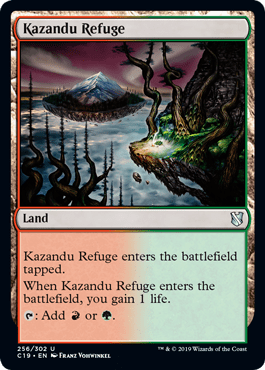

Rugged Highlands and Kazandu Refuge are functionally identical lifegain lands. While green cards like Accomplished Alchemist and Ageless Entity offer good payoffs for lifegain cards, red and green alone don’t offer the same support as white, for example.
But these cards are slightly better than a vanilla tap land, because gaining one life is still better than no benefit at all, even without lifegain payoffs.
#25. Slagwoods Bridge
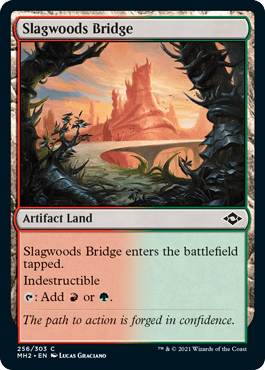
To be honest, Gruul decks aren’t really what you think of when you think of artifact decks. You’re more likely to want Slagwoods Bridge if you’re playing a multicolor deck that cares about artifacts entering the battlefield, or how many you control.
And having the indestructible ability means you can be safe knowing that nothing will happen to this land once it’s out on the battlefield. While this isn’t something you’ll see in every game, it could be useful from time to time.
#24. Highland Forest + Wooded Ridgeline
Highland Forest and Wooded Ridgeline are the first Mountain Forests on this list. Besides tapping for both red and green mana, cards that have both land types gain the extra benefit of being more easily searched for by fetch lands, spells, and abilities. This benefit increases even more for any 2-type land that includes Forest since there are more green cards that allow you to search for any Forest in your deck.
Oh, and this card also benefits from all of the same snow interactions as Highland Weald.
#23. Temple of Abandon

Scrying is one of those abilities in Magic that might seem underwhelming but is actually incredibly useful. With the ability to move the top card of your library to the bottom, you improve your chances of drawing a useful card.
Green offers a lot of good card draw options, like Beast Whisperer or The Great Henge. Scrying before card draw is always helpful, and it’s nice to get the option without paying any mana.
#22. Racers' Ring
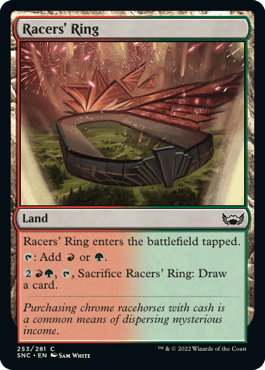
Racers' Ring is part of the New Capenna locales cycle. What sets this card apart is its versatility.
By letting you sacrifice it and draw a card, you can go digging through your library for a much-needed threat or response in the late game. But you can also keep it around as just another helpful dual land if you’re doing fine on cards and have everything you need.
#21. Sheltered Thicket
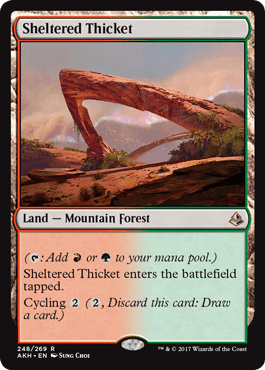
Sheltered Thicket’s cycling ability makes it a much more versatile option than other dual lands. Cycling this offers you a second chance at a better play for the turn if you already have a substantial mana base and would much rather try for another card.
It’s also important to note that this is also a Mountain Forest, making it easy to search for.
#20. Mountain Valley
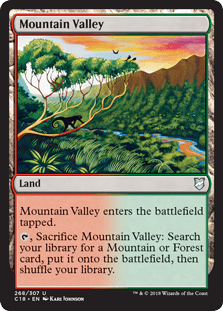
You may have heard Mountain Valley and cards like it called “slow” fetch lands, which is a pretty accurate description of what it does. It can sacrifice itself to search for a land with at least one of the land types listed, in this case a Mountain or a Forest.
Gruul decks have access to landfall abilities through cards like Brushfire Elemental and Avenger of Zendikar. Not only will you get a landfall trigger when you first play Mountain Valley, but you’ll also get a second trigger when you use it to fetch up another land.
#19. Gruul Turf
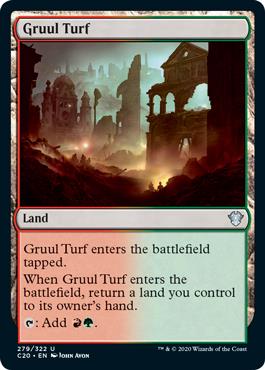
Gruul Turf is what’s known as a “bounce” land since it returns a land you control to your hand. It might not seem all that different from the other lands at first glance. It comes in tapped, meaning you most likely won’t be able to generate mana until your next turn. It also bounces another land, so it doesn’t get you ahead on the mana curve despite tapping for two mana. But this land is a bit more versatile than a dual land that just enters tapped.
Another important thing to note about Gruul Turf is that it can help with landfall triggers. You’re able to double-dip on the landfall trigger from the land you bounce on your next turn by bouncing one of the lands you’ve already played without actually putting you behind on mana.
If you play Commander, then Gruul Turf can act as part of an infinite combo along with Kodama of the East Tree and any landfall card.
#18. Raging Ravine
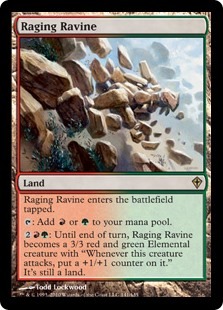
Gruul decks are usually built as creature-based aggro decks. Raging Ravine offers you a chance to make sure you can keep the pressure on your opponents, even if they’ve found ways to remove your other attackers.
Another thing to note is the use of +1/+1 counters. Neon Dynasty introduced cards like Invigorating Hot Spring that give benefits to modified creatures, which Raging Ravine would become the first time it attacks. Cards like Vorinclex, Monstrous Raider that double up counters also help make this land an even better threat.
#17. Skarrg, the Rage Pits
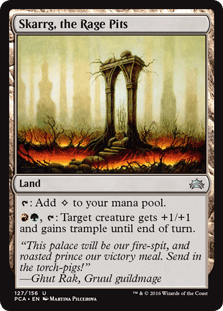
Along the same lines of aggro support, Skarrg, the Rage Pits can also be a very helpful choice. It can help increase the threat level of one of your creatures by making it bigger and giving it trample, even if it can’t become a threat itself.
This card rightfully misses out on a higher spot on the list since it can’t tap for colored mana, but it still deserves to be here thanks to the utility it offers to most Gruul decks.
#16. Mossfire Valley
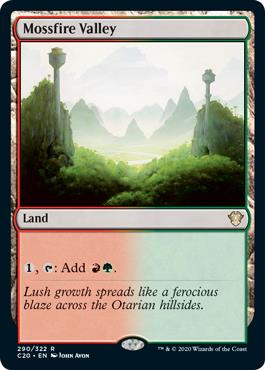
Mossfire Valley is great for mana fixing. Put one mana in, get both of your colors out. And it also has the benefit of generating mana immediately most of the time since it enters untapped. The one downside to this card is that it doesn’t generate its own mana.
#15. Fungal Reaches
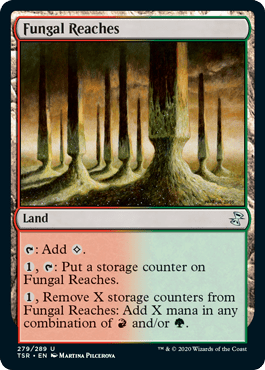
Fungal Reaches is an interesting case. It’s fast in the sense that it can immediately tap for mana, but it can only produce colorless mana on its first turn out. Having to both pay one mana from another land and tap it to add a storage counter for later is also something that seems like it wouldn’t really be that useful, but it’s a great way to stockpile for later.
That being said I'd keep this card for slower formats, since it'll take at least two turns before it outputs more mana than it takes to activate its ability.
#14. Kessig Wolf Run
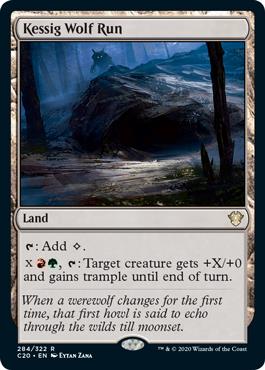
Kessig Wolf Run is basically just a better version of Skarrg, the Rage Pits. It becomes much more versatile by allowing you to pay the amount of mana you want to buff your creature by.
Whether you’re just giving a creature trample to do the last one or two points of damage or you have a lot of mana at your disposal, Kessig Wolf Run can give you what you need to close out a game.
#13. Game Trail

This is the first in a series of dual lands I'm going to look at that can enter the battlefield untapped given specific conditions. What makes Game Trail the worst of these types of cards is the strict requirements it has.
By requiring you to reveal a Mountain or Forest from your hand, you’re stuck playing this tapped if you don’t happen to draw it at the same time as a land meeting those requirements. Not only is it less likely that you’ll have both in your hand at the same time, but it also forces you to give your opponents information about your hand. If the card you reveal is one of the only cards left in your hand, they might be more confident about making moves knowing you're less likely to have a response.
#12. Rockfall Vale
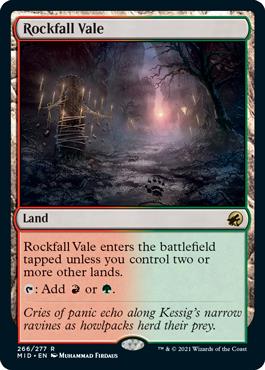
The requirement for Rockfall Vale to enter untapped is actually pretty easy to meet. You just need two other lands of any kind for this to enter untapped.
While there aren’t strict requirements on the type of lands, it does slow down this card's potential for when it can come in untapped. The further into the game you go, the better this card becomes. On the flip side, this card isn’t the best option for turn 1 or 2. And you have some better options in formats where speed is essential.
#11. Cinder Glade
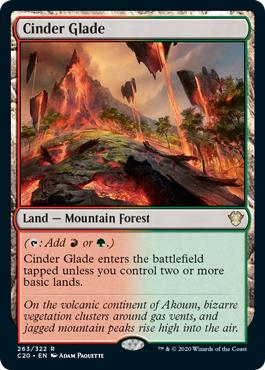
Although Cinder Glade also requires two other lands to come in untapped (and they both have to be basic), I think it has a slight edge over Rockfall Vale since it's a Mountain Forest. It’s entering the battlefield tapped anyway if you’re searching this land up with a spell like Farseek, but you’re getting a dual land instead of a basic.
#10. Copperline Gorge

It may be tempting to look at Copperline Gorge and think that it has the same problem as the above entries, just in reverse. But unlike the slower lands of this type, you’ll already have access to three or more mana by the time this card enters tapped.
You already have some options if you draw Copperline Gorge in a hand after your third land has been played. Since you’re in red, maybe you pitch the land for Faithless Looting or a similar effect. And you still have other mana to work with even if you’re stuck playing the card tapped, making it less impactful than early game when you may have to wait a few turns to do anything with slower lands.
#9. Spire Garden
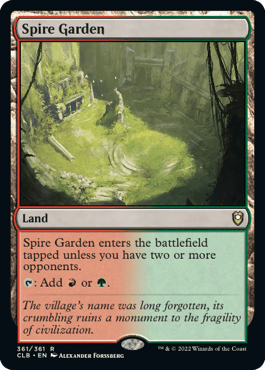
It’s important to note right off the bat that Spire Garden is only legal in Commander, Legacy, Vintage and Oathbreaker. But it's a great dual land in Commander. While it loses points for not being searchable, this is pretty close to being a true dual, and at a fraction of the price.
#8. Rootbound Crag
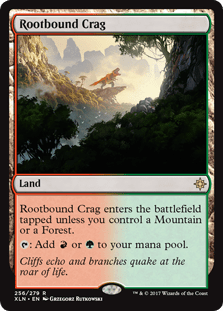
The last and best of this subseries of Gruul lands is Rootbound Crag. Serving as a nice middle ground between the fast lands and the slow lands, this card only requires one other land to come in untapped. The reason I’m giving this the top spot is consistency, even if there are instances in which fast lands will be better than it.
Not only are you likely running basic Mountains and Forests in a Gruul deck, but this land also comes in untapped if you have a Mountain Forest dual in play. Assuming you pay good attention to your opening hand and mulligan appropriately, this land will most likely be coming in untapped as early as turn two.
#7. Cragcrown Pathway / Timbercrown Pathway
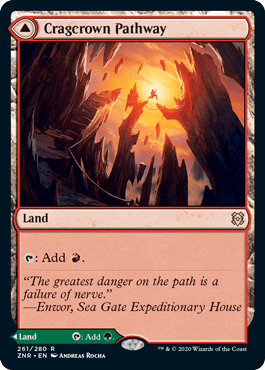

Coming in untapped every time gives Cragcrown Pathway an edge over some of the lands that come in tapped most of the time. It can always be what you need on the turn you put it down since you have the choice to choose which color you’re playing it as.
While it isn’t as helpful as a true dual starting the next turn, having that power for the turn you play it can make a big difference. That one mana on that one turn could be the deciding factor in a game in a lot of the quicker more competitive formats.
#6. Fire-Lit Thicket
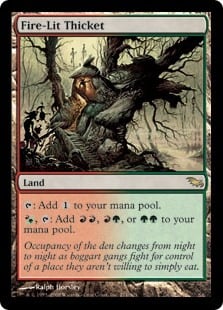
Fire-Lit Thicket is a filter land, which allows you to fix your mana as you need. As long as you have a source of red or green mana, this land allows you to tap that land and itself to create two mana in any combination of red and/or green.
What’s really great about filter lands is their ability to create mana for a color you might not have on the board. While it may seem no different from just drawing a land of the color you need, the difference comes in the amount of mana you can create. You can go from having only Mountains on the board to having access to two green mana from a single land.
#5. Grove of the Burnwillows
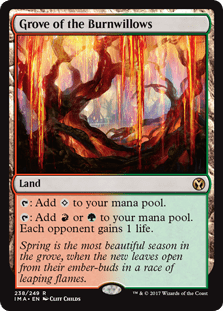
Grove of the Burnwillows is interesting because it's mechanically unique. There’s no cycle of lands that all have this effect, it’s just this one. That actually gives you a pretty nice advantage as a Gruul player since you have access to an extra type of fast dual land. Being able to tap for colorless mana is also a big plus on this card because you can ignore its effect once you have all the colors you need from other sources.
You may not want to give your opponent one or two extra life if you’re running an aggro deck since it might put them just out of reach of a finishing blow. It would make sense to prefer to take the damage yourself in a fast game. But you may not be comfortable pinging yourself repeatedly for mana if you’re going for more of a midrange strategy.
#4. Karplusan Forest
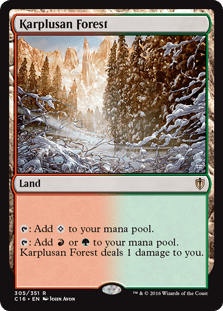
As I hinted at above, Karplusan Forest is very similar to Grove of the Burnwillows, the only difference being that the land deals damage to you instead of giving life to your opponents. This means it has all the same benefits without one of the downsides.
While this is designed with its own downside, I still think it’s a little more manageable. Again, losing a life here and there won’t really matter too much to you if you’re looking to close out the game fast.
#3. Wooded Foothills
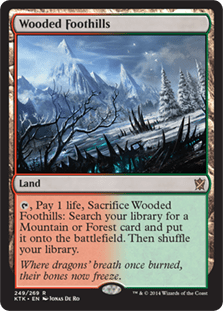
I mentioned throughout this list how helpful it is for a land to have Mountain Forest in its type line because it allows you to search for it more easily. Well, Wooded Foothills is the best way to search for those cards.
And fetching dual lands isn’t the only use for this card. You can use Wooded Foothills to grab a basic Mountain or Forest and put it onto the battlefield untapped for immediate use if you need quick color fixing or an extra mana of a certain color.
An extra bonus to fetch lands is allowing you to thin out your deck. Instead of drawing a basic land you can draw this, use it to find a land you need, and then there are two fewer land cards to draw through. This allows you to get to those spells you need quicker.
#2. Stomping Ground
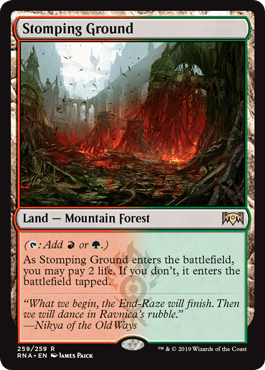
Stomping Ground doesn’t really need any utility effects because it’s just a very solid dual land. Keep in mind that this land may be the only way you’re able to drop a blocker or remove a threat that could do more damage to you if you’re thinking that two life isn’t worth it. But you can always choose to play it tapped and just wait if it really isn’t worth it in that situation.
Shock lands like Stomping Ground can also be effective tools for bluffing. Even if you don’t have a play with it, you can shock it in for two life to make your opponent think that you have something to play at instant speed. While this won’t work every time, it could discourage an attack against you if your opponent thinks you have a combat trick.
#1. Taiga

What makes true duals the best option for 2-colored lands is the lack of restrictions. Everything good that was said about every Mountain Forest is here, without any of the effects that either slow it down or cost something to activate it.
While Taiga isn’t legal in a lot of formats, it’s the best Gruul land whenever it can be played.
Wrap Up
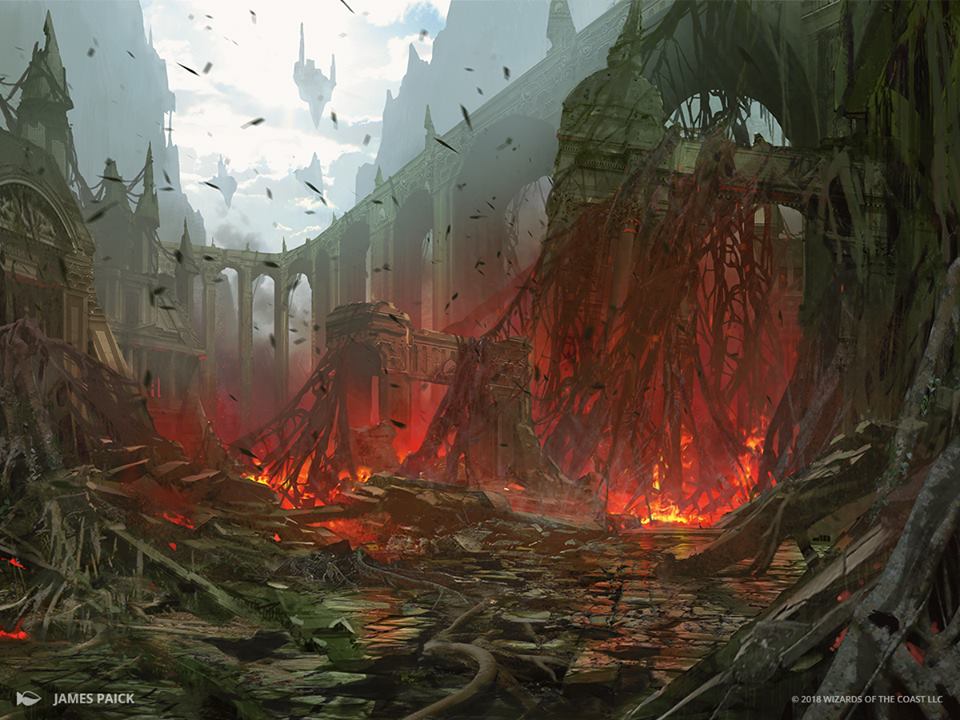
Stomping Ground | Illustration by James Paick
This list should serve as a helpful guide for you while you're choosing between options for your Gruul decks. All of these lands have a place in someone’s deck at the end of the day, and it’s ultimately up to you to decide.
If you have your own thoughts on the list, I’d love to hear them. What do you think about Grove of the Burnwillows vs. Karplusan Forest? What kind of land would it take to knock Taiga off the top spot? Do you think true duals should be more accessible? Let me know in the comments below or on Draftsim’s Twitter.
I hope you found this helpful, and I look forward to hearing from you next time!
Follow Draftsim for awesome articles and set updates: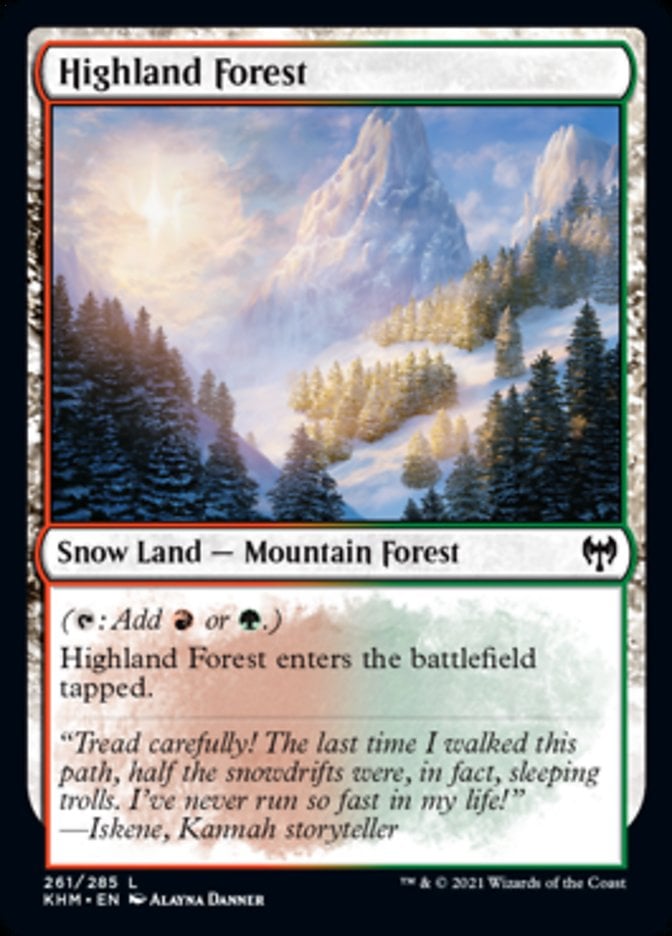
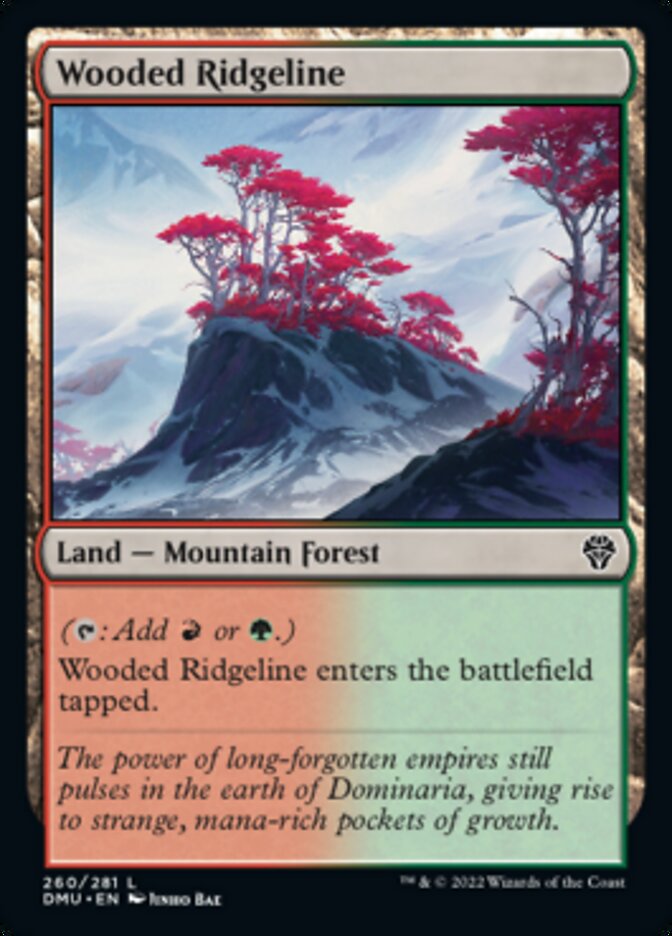
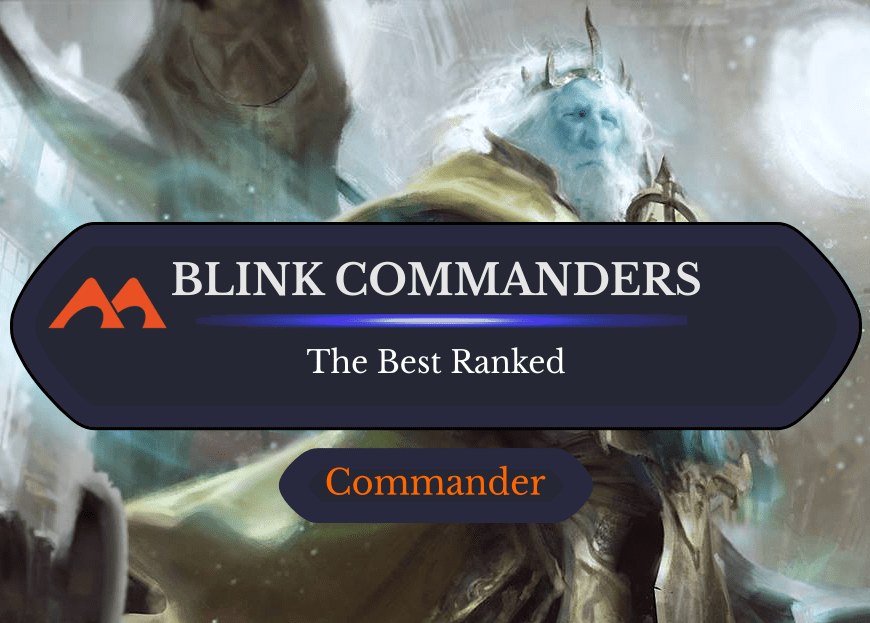
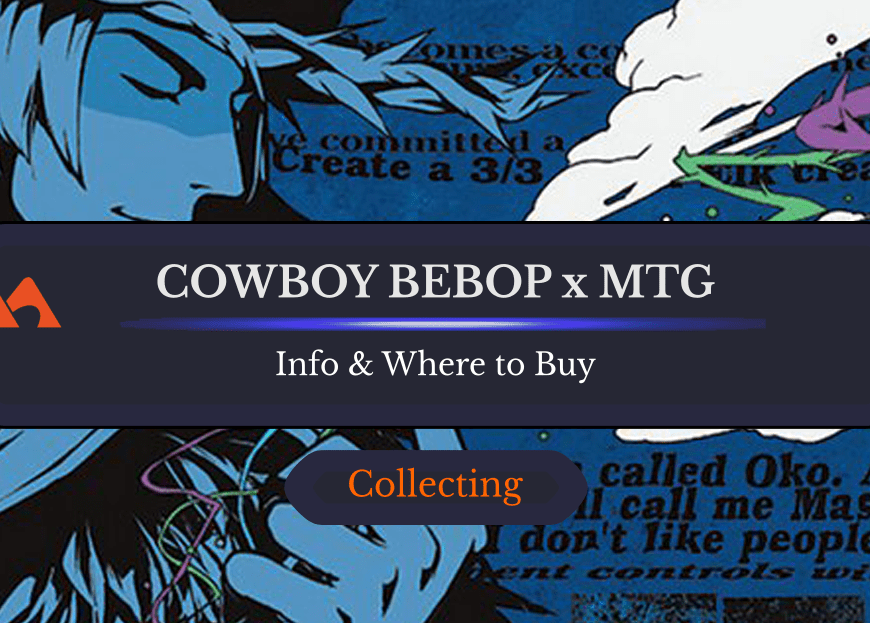
Add Comment